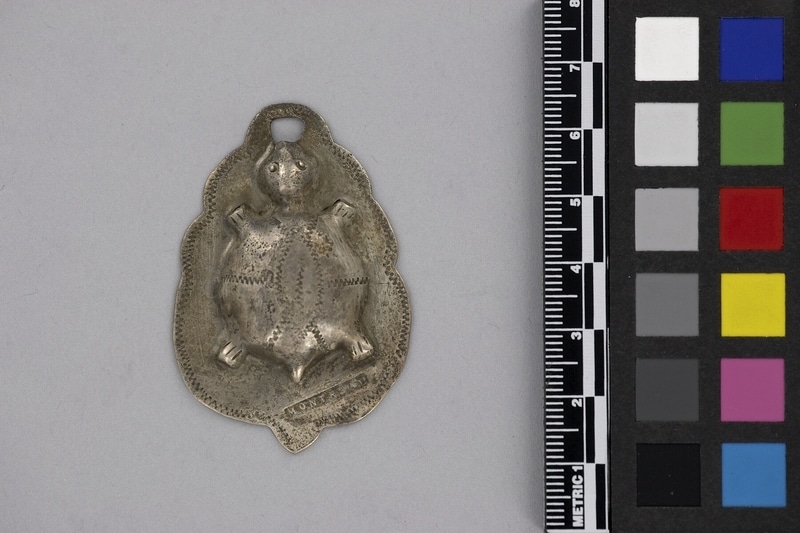Pendant Item Number: 1590/252 from the MOA: University of British Columbia

Description
Pendant of a hollow silver turtle on a roughly oval flat surround. Turtle’s body is engraved with a zigzag design. The surround has scalloped edges also engraved with zigzag design. Hole at top. Mark in rectangular cartouche on flat surround.
History Of Use
Silver ornaments represent an important part of early exchange between Europeans,including fur traders, and First Nations peoples, especially in eastern and central Canada and the U.S.A. Initially, the main source of silver was British, French and Spanish coins. Most ornaments were produced by silversmiths of European origin in North America and Europe, and were actively traded only from 1760 to 1821. By the mid-18th century silver objects were produced in New England, Quebec and Montreal. Silver was used by First Nations peoples as a sign of rank. Silver ornaments in these styles continue to be produced by native silversmiths in central Canada and the U.S.A.
Specific Techniques
Rocker engraving is a freehand technique. Irregularity is characteristic.
Cultural Context
personal decoration; status
Item History
- Made in Montreal, Quebec, Canada between 1760 and 1821
- Owned by Kathleen E. Reif before September 9, 1993
- Received from Kathleen E. Reif (Donor) on September 9, 1993
What
Who
- Culture
- Eastern Woodlands
- Previous Owner
- Kathleen E. Reif
- Received from
- Kathleen E. Reif (Donor)
Where
- Holding Institution
- MOA: University of British Columbia
- Made in
- Montreal, Quebec, Canada
When
- Creation Date
- between 1760 and 1821
- Ownership Date
- before September 9, 1993
- Acquisition Date
- on September 9, 1993
Other
- Item Classes
- metalwork
- Condition
- good
- Current Location
- Case 45
- Accession Number
- 1590/0252